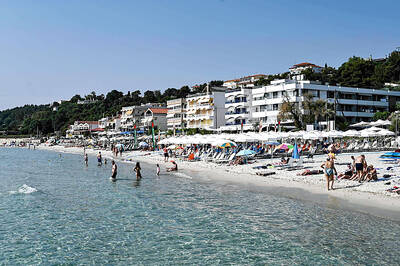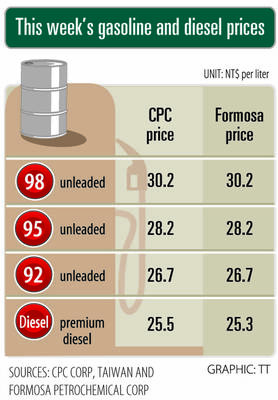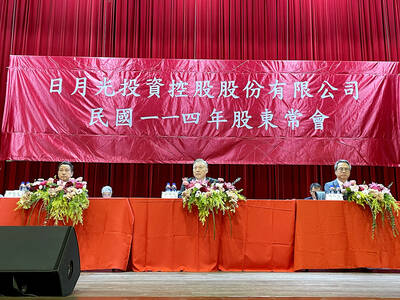Intel Corp’s global push to increase capacity would include adding facilities in France and Italy, as well as a major production site in Germany, people familiar with negotiations said.
France is to be home to a research and design center, while Italy would be the location of a test and assembly factory, said the people, who asked not to be identified because the plan has not been announced.
The main wafer fabrication plant would likely be built in Germany, the people said.
Altogether, the expansion would cost tens of billions of dollars, they said.
Intel chief executive officer Pat Gelsinger is trying to restore the world’s largest chipmaker to its former glory. The company has lost its technological edge to rivals and ceded market share — something the spending binge is meant to address.
Gelsinger also wants to bring more production back to the US and Europe, counterbalancing Asia’s manufacturing dominance.
Representatives of the French, German and Italian governments declined to comment, as did Intel spokespeople in Europe and the US.
For Europe, the move would slow its decline as a manufacturing base in the US$400 billion chip industry. The US company has an existing plant in Ireland and there are older former Advanced Micro Devices Inc processor factories that are owned by Globalfoundries Inc in Dresden, Germany, but European manufacturers typically do not make the kind of advanced logic chips that are regarded as the state of the art.
NXP Semiconductors NV and STMicroelectronics NV are the continent’s two largest homegrown chipmakers. They focus on parts for vehicles and other equipment — rather than the advanced computer processors that are Intel’s specialty.
A global chip shortage also has renewed concerns about the concentration of production in Asia. Manufacturers such as Taiwan Semiconductor Manufacturing Co (TSMC, 台積電) and South Korea’s Samsung Electronics Co have grown increasingly deft at producing chips, forcing Intel to play catch-up.
Gelsinger has argued that spreading manufacturing around the world would help avoid the kinds of supply constraints that have hobbled whole industries this year, including automakers.
Part of Gelsinger’s plan is to build factories that make chips for other companies, directly rivaling TSMC in the so-called foundry business. Until now, Intel has typically only manufactured chips of its own design.
To help fund his ambitions, he has called on lawmakers on both sides of the Atlantic to give public money in the form of tax breaks and grants to firms willing to build plants in Europe and the US.
By spreading around Intel’s spending, Gelsinger could be trying to placate as many EU members as he can to try to make sure that none of them object any central funding that is made available, but the plans are not yet final.
Even with potential government help, Intel is budgeting as much as US$28 billion for new plants and equipment next year, but the massive increase in expenditure would only put Intel on course to keep up with spending at TSMC and Samsung.

Greek tourism student Katerina quit within a month of starting work at a five-star hotel in Halkidiki, one of the country’s top destinations, because she said conditions were so dire. Beyond the bad pay, the 22-year-old said that her working and living conditions were “miserable and unacceptable.” Millions holiday in Greece every year, but its vital tourism industry is finding it harder and harder to recruit Greeks to look after them. “I was asked to work in any department of the hotel where there was a need, from service to cleaning,” said Katerina, a tourism and marketing student, who would

i Gasoline and diesel prices at fuel stations are this week to rise NT$0.1 per liter, as tensions in the Middle East pushed crude oil prices higher last week, CPC Corp, Taiwan (台灣中油) and Formosa Petrochemical Corp (台塑石化) said yesterday. International crude oil prices last week rose for the third consecutive week due to an escalating conflict between Israel and Iran, as the market is concerned that the situation in the Middle East might affect crude oil supply, CPC and Formosa said in separate statements. Front-month Brent crude oil futures — the international oil benchmark — rose 3.75 percent to settle at US$77.01

RECORD LOW: Global firms’ increased inventories, tariff disputes not yet impacting Taiwan and new graduates not yet entering the market contributed to the decrease Taiwan’s unemployment rate last month dropped to 3.3 percent, the lowest for the month in 25 years, as strong exports and resilient domestic demand boosted hiring across various sectors, the Directorate-General of Budget, Accounting and Statistics (DGBAS) said yesterday. After seasonal adjustments, the jobless rate eased to 3.34 percent, the best performance in 24 years, suggesting a stable labor market, although a mild increase is expected with the graduation season from this month through August, the statistics agency said. “Potential shocks from tariff disputes between the US and China have yet to affect Taiwan’s job market,” Census Department Deputy Director Tan Wen-ling

UNCERTAINTIES: The world’s biggest chip packager and tester is closely monitoring the US’ tariff policy before making any capacity adjustments, a company official said ASE Technology Holding Inc (日月光投控), the world’s biggest chip packager and tester, yesterday said it is cautiously evaluating new advanced packaging capacity expansion in the US in response to customers’ requests amid uncertainties about the US’ tariff policy. Compared with its semiconductor peers, ASE has been relatively prudent about building new capacity in the US. However, the company is adjusting its global manufacturing footprint expansion after US President Donald Trump announced “reciprocal” tariffs in April, and new import duties targeting semiconductors and other items that are vital to national security. ASE subsidiary Siliconware Precision Industries Co (SPIL, 矽品精密) is participating in Nvidia